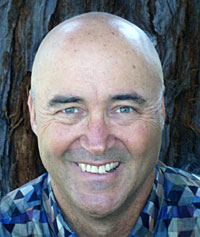 It is initially startling but ultimately logical to learn that homeopaths use stinging nettle (Urtica urens) to treat people with first or second degree burns. Of course, a homeopath would not recommend actually touching a stinging nettle plant to the burned area. Instead, a homeopath would give a specially prepared, non-toxic dose of stinging nettle. Since stinging nettle causes a burn when exposed to it in toxic dose, it also helps heal burns when taken in small non-toxic dose.
It is initially startling but ultimately logical to learn that homeopaths use stinging nettle (Urtica urens) to treat people with first or second degree burns. Of course, a homeopath would not recommend actually touching a stinging nettle plant to the burned area. Instead, a homeopath would give a specially prepared, non-toxic dose of stinging nettle. Since stinging nettle causes a burn when exposed to it in toxic dose, it also helps heal burns when taken in small non-toxic dose.
The basic principle of homeopathic medicine is that a small dose of a substance will help cure that which it causes in overdose. Although this principle may be a bit confusing at first, it actually makes a lot of sense. Modern day physiology and biology are confirming a basic premise of homeopathy which recognizes that symptoms are efforts of the organism to adapt to stress or infection. Symptoms are therefore understood as the way the "bodymind" is trying, although not always successfully, to re-establish homeostasis or balance. Since symptoms are the best efforts of the organism to attempt to heal itself, it is best to avoid treating or suppressing specific symptoms, and it is preferred to aid and stimulate the body's defense and immune processes.
The homeopathic medicines are able to stimulate the defense system, since they, like conventional immunizations and allergy treatments, give small doses of what causes a condition in order to stimulate the immune system. Homeopathic medicines, however, are distinctively different from immunizations and allergy treatment, since the homeopathic medicines are more individually prescribed to people, given in much smaller and less toxic doses, and used for both prevention and treatment of a person.
Homeopathic medicine developed much of its popularity in the United States and Europe because of its success in treating people with cholera, scarlet fever, yellow fever and other infectious diseases that were ravaging populations. More recently homeopathic medicine has developed a reputation of suc-cessfully treating people with various chronic complaints. What many people do not know about homeopathy is that it also provides many valuable medicines in treating people who suffer from accidents and injuries. When these medicines are used in conjunction with conventional first aid procedures, the risk of long-term damage from an injury can be significantly decreased and the healing process can be noticeably enhanced.
One must study homeopathic medicine for many years in order to learn how to prescribe the correct medicine for people with chronic conditions. One can, however, learn to use the medicines for first aid very easily. Whereas treatment of a person's acute or chronic disease requires strict individualization of the person's total physical and psychological state, treatment for accidents and injuries does not require such individualized presciption. The reason for this difference is that people with acute or chronic diseases have distinct or subtlely different symptoms and causes of their condition, and thus need a different medicine to begin their curative process. People with injuries tend to experience very similar symptoms and usually need a similar metabolic stimulus to heal their complaint. Basically, when different people cut themselves, get burned, break a leg or injure themselves in some other way, they all tend to need a similar stimulus to heal their injury.